Related Research Articles

Maurice Ernest Gibb was a British musician. He achieved worldwide fame as a member of the pop group Bee Gees. Although his elder brother Barry Gibb and fraternal twin brother Robin Gibb were the group's main lead singers, most of their albums included at least one or two songs featuring Maurice's lead vocals, including "Lay It on Me", "Country Woman" and "On Time". The Bee Gees are one of the most successful pop-rock groups of all time.

Sir Barry Alan Crompton Gibb is a British musician, singer, songwriter and record producer. He rose to worldwide fame as a member of the Bee Gees, with his younger brothers, Robin and Maurice, one of the most commercially successful groups in the history of popular music. Gibb's career has spanned over 60 years.

One Night Only is a live album and DVD/Blu-ray by the Bee Gees. It features the group's concert at the MGM Grand in Las Vegas in 1997 and includes many of their greatest hits.

Best of Bee Gees is a 1969 compilation album by the English-Australian rock band Bee Gees. It was their first international greatest hits album. It featured their singles from 1966–1969 with the exception of the band's 1968 single "Jumbo".

Vincent Melouney is an Australian musician. He is best known as an official member of the Bee Gees from 1967 to 1969 during the group's initial period of worldwide success.

The Marbles were an English rock duo that consisted of Graham Bonnet and Trevor Gordon, who operated between 1968 and 1969. Their only well-known singles were "Only One Woman" and "The Walls Fell Down". They also became associated with the Bee Gees members Barry, Robin and Maurice Gibb at that time.

Horizontal is the fourth studio album by the Bee Gees, and their second album to receive an international release. The LP was released in early 1968, and included the international hit singles "Massachusetts" and "World". On 5 February 2007, Reprise Records reissued Horizontal with both stereo and mono mixes on one disc and a bonus disc of unreleased songs, non-album tracks, and alternate takes. The album was released in Polydor in many countries and on Atco only in the US and Canada. "And the Sun Will Shine" was released as a single only in France. The influences displayed on the album range from the Beatles to baroque pop.
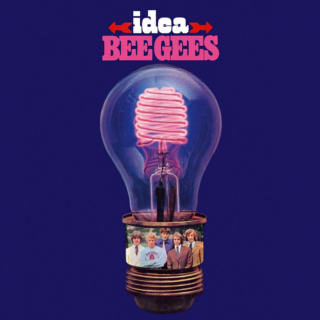
Idea is the fifth album by the Bee Gees. Released in September 1968, the album sold over a million copies worldwide. The album was issued in both mono and stereo pressings in the UK. The artwork on the Polydor release designed by Wolfgang Heilemann featured a "beehive" neon lightbulb with a group photo in its base, while the North American ATCO release designed by Klaus Voormann featured a composite head made from each band member. It was their third internationally released album – the first two albums being released only in the Australian market.
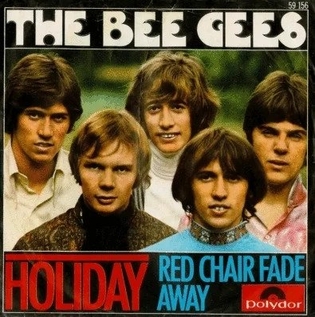
"Holiday" is a song released by the Bee Gees in the United States in September 1967. It appeared on the album Bee Gees' 1st. The song was not released as a single in their native United Kingdom because Polydor UK released the single "World" from their next album Horizontal.
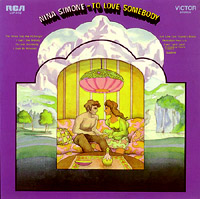
To Love Somebody is an album by jazz singer-songwriter/pianist Nina Simone. It was released as quickly as possible to prolong the unexpected success of 'Nuff Said! The title is taken from the Bee Gees song "To Love Somebody"; her cover of the song became her second British hit single after "Ain't Got No-I Got Life".
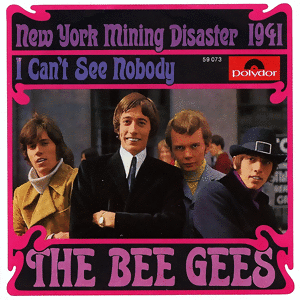
"New York Mining Disaster 1941" is the debut American single by the Bee Gees, released on 14 April 1967. It was written by Barry and Robin Gibb. Aside from a moderately successful reissue of their Australian single "Spicks and Specks," it was the first single release of the group's international career and their first song to hit the charts in both the UK and the US. It was produced by Ossie Byrne with their manager Robert Stigwood as executive producer. The song was the first track of side two on the group's international debut album, Bee Gees' 1st. This was the first single with Australian drummer Colin Petersen as an official member of the band.
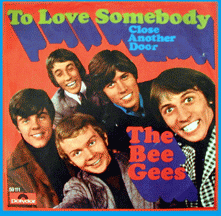
"To Love Somebody" is a song written by Barry and Robin Gibb. Produced by Robert Stigwood, it was the second single released by the Bee Gees from their international debut album, Bee Gees 1st, in 1967. The single reached No. 17 in the United States and No. 41 in the United Kingdom. The song's B-side was "Close Another Door". The single was reissued in 1980 on RSO Records with "How Can You Mend a Broken Heart" as its flipside. The song ranked at number 94 on NME magazine's "100 Best Tracks of the Sixties". It was a minor hit in the UK and France. It reached the top 20 in the US. It reached the top 10 in Canada.

Bee Gees' 1st is the third studio album by the Bee Gees, and their first international full-length recording after two albums distributed only in Australia and New Zealand. Bee Gees' 1st was the group's debut album for the UK Polydor label, and for the US Atco label. Bee Gees 1st was released on 14 July 1967 in the UK. On 9 August it entered the UK charts; on that same day, the album was released in the US, and it entered the US charts on 26 August.

Here at Last... Bee Gees... Live is the first live album by the Bee Gees. It was recorded on December 20, 1976 at the LA Forum and was released in May 1977 by RSO Records. It reached No. 8 in the US, No. 8 in Australia, No. 1 in New Zealand, and No. 2 in Spain.

Bee Gees Gold is a compilation album, released in limited territories, that focused on the early hits of the Bee Gees. Labeled as "Volume 1", it featured their U.S. Top 20 hits between 1967 and 1972. The album was intended to replace the two previous hits compilations, Best of Bee Gees and Best of Bee Gees, Volume 2. It reached number 50 on Billboard's album chart during a time when the Bee Gees were topping the charts with their new R&B/disco sound found on their then current album Children of the World. Gold went gold in America in January 1978 and has sold 1.3 million copies to date. A kind of second volume was released as Bee Gees Greatest in 1979 which summed up the disco years from 1975 to 1979.

The Ultimate Bee Gees is a compilation album released to coincide with the 50th anniversary of the Bee Gees. Although the group did not start recording until 1963 on Festival Records in Australia, they began calling themselves the "Bee Gees" in 1959 after several name changes such as "Wee Johnny Hayes and the Bluecats", "The Rattlesnakes" and "BG's". Each disc is themed with the first containing more upbeat songs, called A Night Out, and the second containing slower songs and ballads, called A Night In, though the cover art does not distinguish this theme. Liner notes were written by Sir Tim Rice. This also marks the return of the 1970s era logo on an official Bee Gees release, which was last used on the Bee Gees' 1983 single "Someone Belonging to Someone".

One for All Tour is a concert video from The Bee Gees recorded live at the National Tennis Centre in Melbourne, Australia in November 1989. Melbourne was the third final stop on their 1989 One for All World Tour, which included the United States, Europe, and Asia the first time the Bee Gees played live there since their 1979 Spirits Having Flown Tour. Originally, this video was released in two volumes on VHS, each 50 minutes apiece. Volume One incorrectly listed the song "My World" from 1972 instead of the song "World" from 1967. In the DVD era, the cover was slightly changed and was released under the title The Very Best of The Bee Gees Live! in 1997.

"Morning of My Life" is a song written by Barry Gibb in 1965 whilst in the town of Wagga Wagga, Australia and later recorded by the Bee Gees and several other artists. It was recorded in 1966 during sessions for the album Spicks and Specks, and later was released as the opening track on the compilation Inception/Nostalgia in 1970. The first recording of the song to be released by any artist was by Ronnie Burns, first as a B-side to his Exit, Stage Right single in June 1967 and a month later on his Ronnie LP.

New York Mining Disaster 1941 was released on Spin Records by the Bee Gees in 1967. It was their second EP and, like their first EP, was released only in Australia. All of the songs on this EP were originally released on their third LP Bee Gees' 1st.

Trevor Gordon Grunnill was a British-Australian singer, songwriter and musician. He was one half of the late-1960s musical duo the Marbles, along with Graham Bonnet, whose biggest hit was the UK No. 5 charting track "Only One Woman", and their minor UK hit “The Walls Fell Down”.
References
- ↑ Discogs.com (1967). "Bee Gees - New York Mining Disaster 1941 / I Can't See Nobody". Discogs .
- ↑ Discogs.com (1967). "Bee Gees - Bee Gees' 1st". Discogs .
- ↑ Whitburn, Joel (1982). Joel Whitburn's Bubbling Under the Hot 100 1959–1981. Record Research. p. 16. ISBN 9780898200478.
- ↑ Gilliland, John; Dayton, Bob (1967), Pop Chronicles Interviews #49 - The Bee Gees, part 1, audio recording, 1967/1968 , retrieved July 2, 2020– via University of North Texas Libraries, UNT Digital Library
- ↑ Joseph Brennan. "Gibb Songs: 1966".
- ↑ Joseph Brennan. "Gibb Songs: 1967".
- ↑ Hughes, Andrew (2009). The Bee Gees - Tales Of The Brothers Gibb. ISBN 9780857120045 . Retrieved 21 December 2012.
- ↑ Discogs.com (1968). "Nina Simone - To Love Somebody / I Can't See Nobody". Discogs .
- ↑ Discogs.com (1969). "Nina Simone - To Love Somebody (album)". Discogs .
- ↑ Discogs.com (August 1969). "The Marbles - I Can't See Nobody". Discogs .
- ↑ Discogs.com (1970). "The Marbles - The Marbles (album)". Discogs .